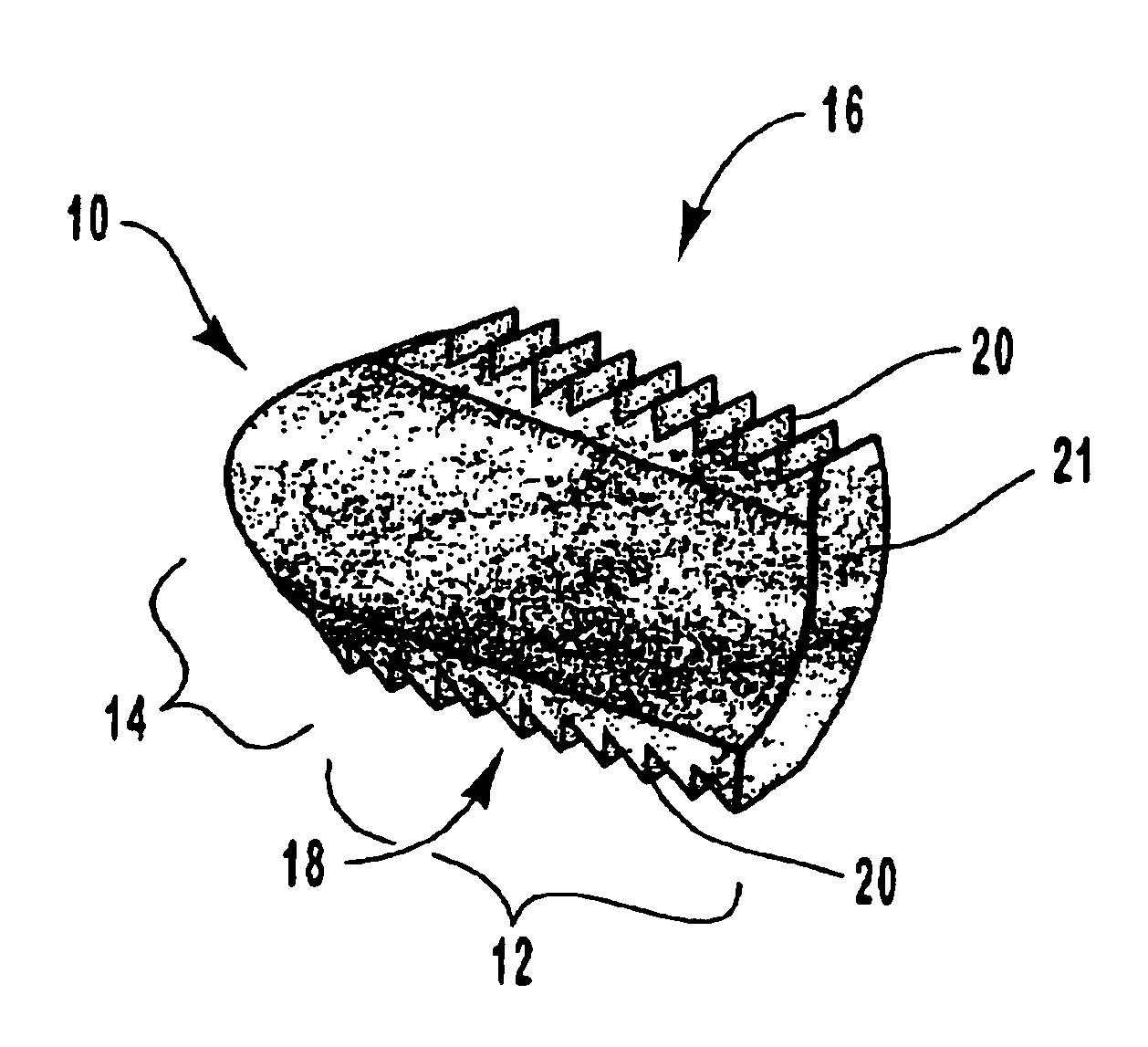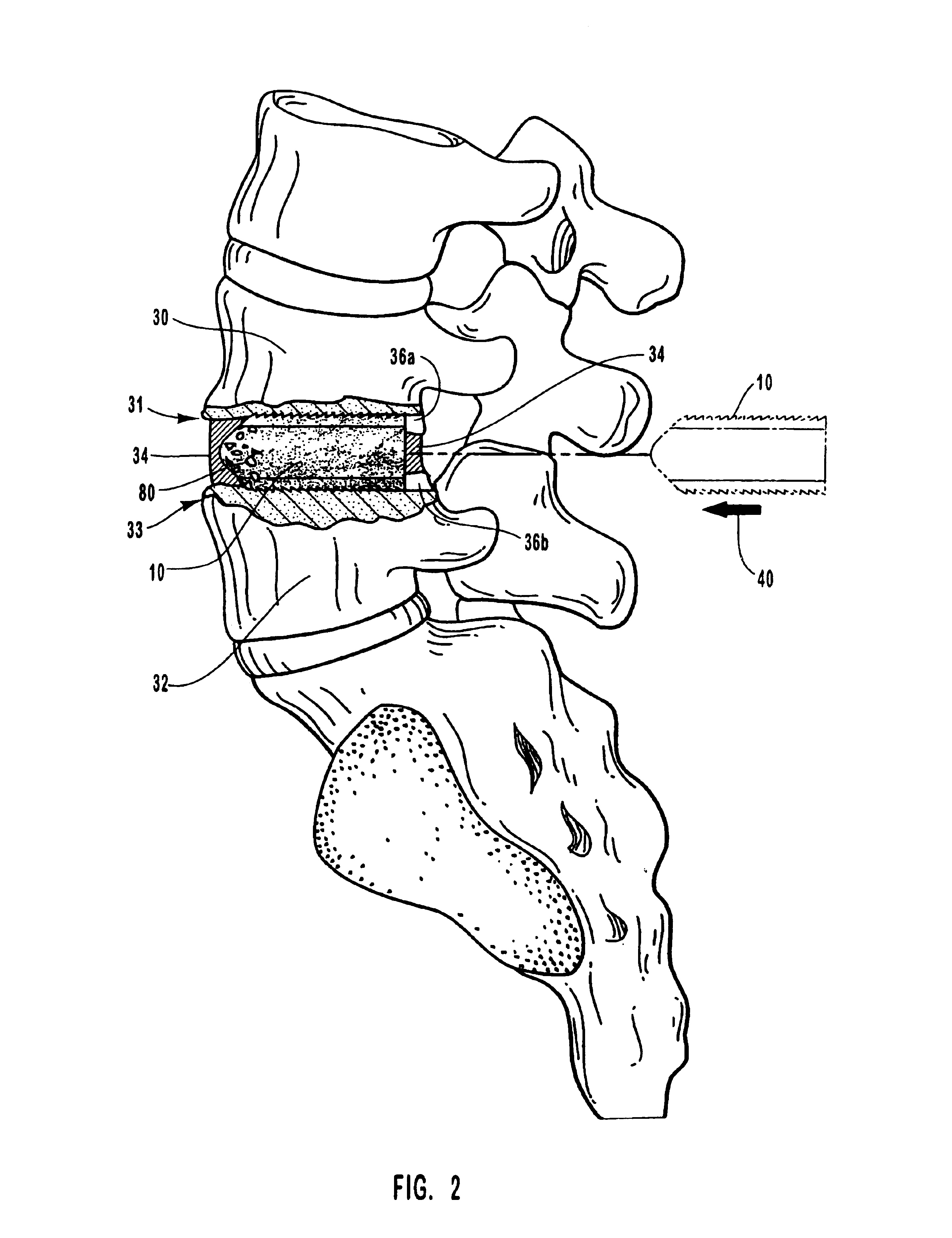Spinal vertebral implant and methods of insertion
a technology of spinal vertebrae and implants, which is applied in the field of spinal vertebrae implants, can solve the problems of reduced fusion or lack, extreme pain to patients suffering from such injuries, and the space used in the cage is not used, so as to prevent the implant from being placed, stimulate bone growth, and encourage greater fusion
- Summary
- Abstract
- Description
- Claims
- Application Information
AI Technical Summary
Benefits of technology
Problems solved by technology
Method used
Image
Examples
example 1
The following procedure was effectively performed on a patient. A midline incision was made and the patient's spine was exposed by subperiosal dissection. Decompression was begun with partial facet joint excision. The capsule of the facet joint was removed with electric cautery and periostial elevator. Since virtually all removed bone is preferably used as graft, extra time was taken to meticulously remove attached soft tissue. The upper facet was cut transversally with an osteotome and removed. Initially, the spinous processes were left intact to facilitate distraction with the laminus spreader.
The interspinous ligament was removed and a laminae spreader was inserted. Cartilage and other soft tissue from the facet joint were removed with a cob elevator and an adison rongeur. The inferior facet was excised, saving the small bits of bone for later grafting. The disk space was radically excised to the outer annulus. The end-plates were vigorously curetted to bone. A cottonoid was plac...
PUM
 Login to View More
Login to View More Abstract
Description
Claims
Application Information
 Login to View More
Login to View More - R&D
- Intellectual Property
- Life Sciences
- Materials
- Tech Scout
- Unparalleled Data Quality
- Higher Quality Content
- 60% Fewer Hallucinations
Browse by: Latest US Patents, China's latest patents, Technical Efficacy Thesaurus, Application Domain, Technology Topic, Popular Technical Reports.
© 2025 PatSnap. All rights reserved.Legal|Privacy policy|Modern Slavery Act Transparency Statement|Sitemap|About US| Contact US: help@patsnap.com



